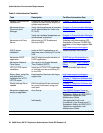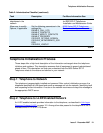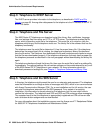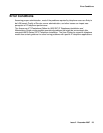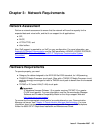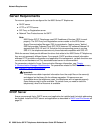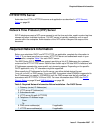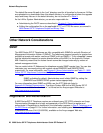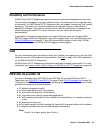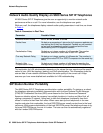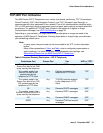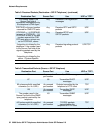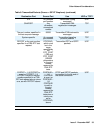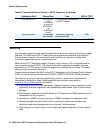
Network Requirements
28 9600 Series SIP IP Telephones Administrator Guide SIP Release 2.0
The default file server file path is the “root” directory used for all transfers by the server. All files
are uploaded to or downloaded from this default directory. In configurations where the upgrade
script and binary files are in the default directory, do not use item 4 in Table 3
.
As the LAN or System Administrator, you are also responsible for:
● Administering the DHCP server as described in Chapter 6: Server Administration.
● Editing the configuration file on the applicable HTTP or HTTPS file server, as covered in
9600 Series SIP IP Telephone Scripts and Binary Files
.
Other Network Considerations
SNMP
The 9600 Series SIP IP Telephones are fully compatible with SNMPv2c and with Structure of
Management Information Version 2 (SMIv2). The telephones respond correctly to queries from
entities that comply with earlier versions of SNMP, such as SNMPv1. “Fully compatible” means
that the telephones respond to queries directed either at the MIB-II or the read-only Custom
MIB. Read-only means that the values therein cannot be changed externally by means of
network management tools.
You can restrict which IP Addresses the telephone accepts SNMP queries from. You can also
customize your community string with system values SNMPADD and SNMPSTRING,
respectively. For more information, see Chapter 6:
Server Administration and Table 11: 9600
Series SIP IP Telephones Customizeable System Parameters.
Note:
Note: SNMP is disabled by default. Administrators must initiate SNMP by setting the
SNMPADD and SNMPSTRING system values appropriately.
For more information about SNMP and MIBs, see the IETF Web site listed in
Appendix B: Related Documentation
. The Avaya Custom MIB for the 9600 Series SIP IP
Telephones is available for download in *.txt format on the Avaya support Web site at
http://www.avaya.com/support
.
Registration and Authentication
A 9600 Series SIP IP Telephone requires an outboard proxy SIP (OPS) extension on Avaya
Communication Manager and a login and password on the SES Server to register and
authenticate it. Registration is described in the Initialization process, in Step
5: Telephone and
the SES Server on page 22. For further information, see Installing and Administering SIP
Enablement Services R 4.0 (03-600766), available on the Avaya support Web site,
http://www.avaya.com/support
.



